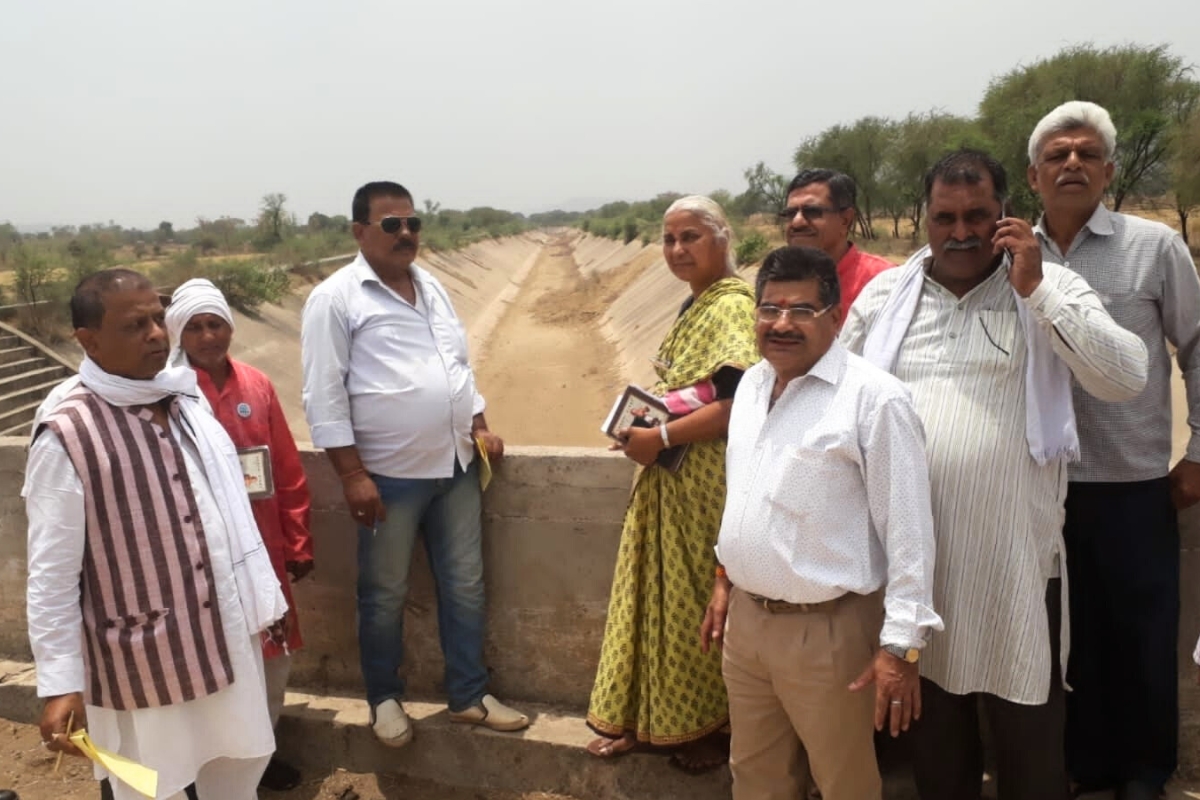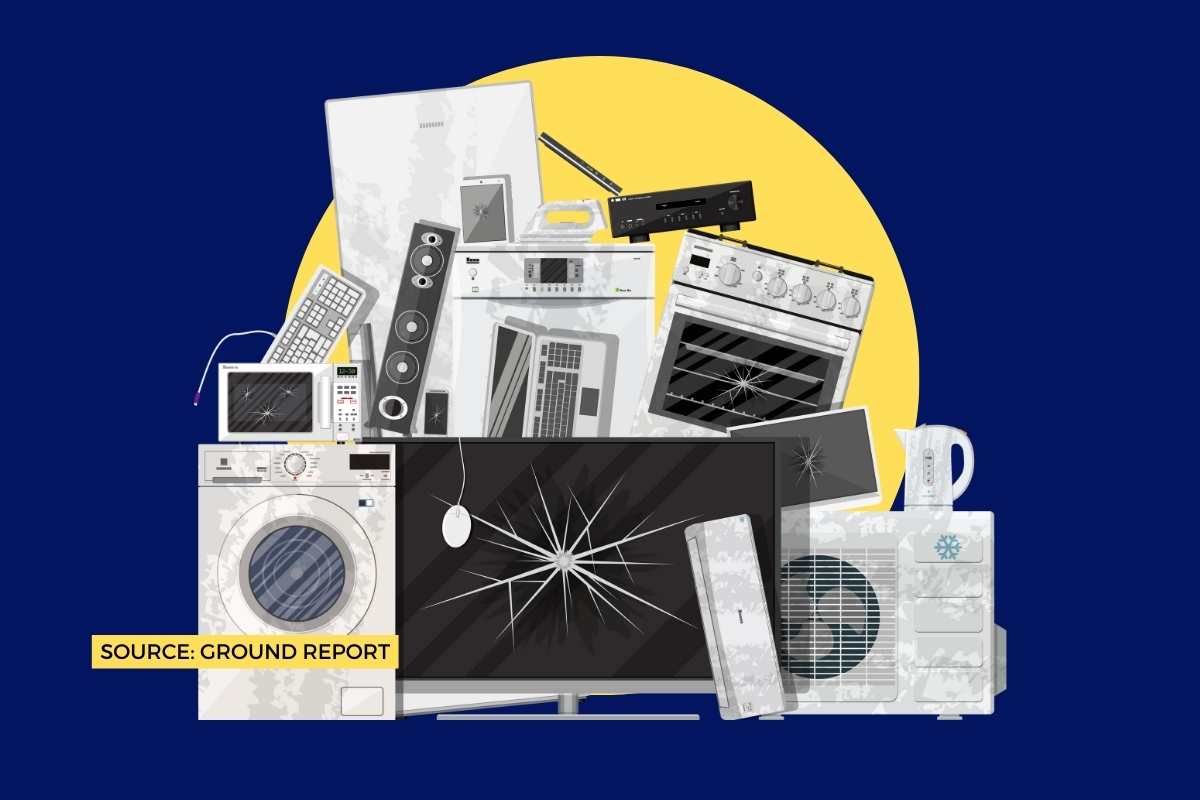In Hanuman Phatak Wali Gali, a narrow lane in the Kasba Mohalla of Sehore city, most families earn by doing daily-wage work. Some catch fish; others run small handcarts to make a living. Recently, old digital meters were removed and replaced with new smart meters in every home. When the Ground Report Team visited the area and asked about the new meters, a group of women quickly gathered around us. They were eager to share their worries about the smart meters.
“Ever since this new meter was installed, I’ve stopped watching my favourite daily soaps,” says 38-year-old Chanda, standing at the door of her home.
“Our monthly electricity bill never crossed ₹350. But this new meter is already showing over ₹500 in just 15 days.”
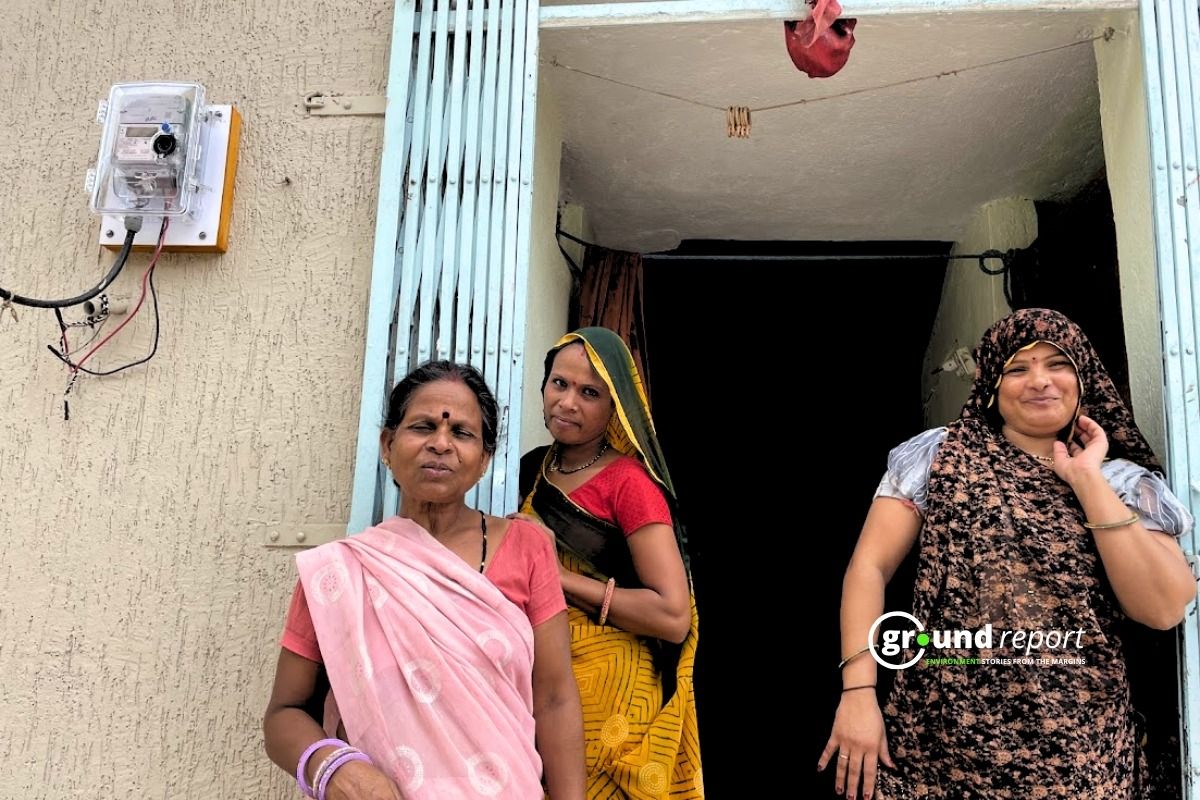
Chanda lives in the narrow lane with her family. Her husband runs a small street food cart and earns around ₹15,000 a month. She worries that if the electricity bill keeps rising, it will become hard to manage the household.
Rajesh Kushwaha, an auto-rickshaw driver, shares the same concern. A smart meter was installed at his home on July 4, and since then, his worries have grown. He claims his old meter used to show an increase of about 2.5 units per day, but the new one now shows 5 units daily.
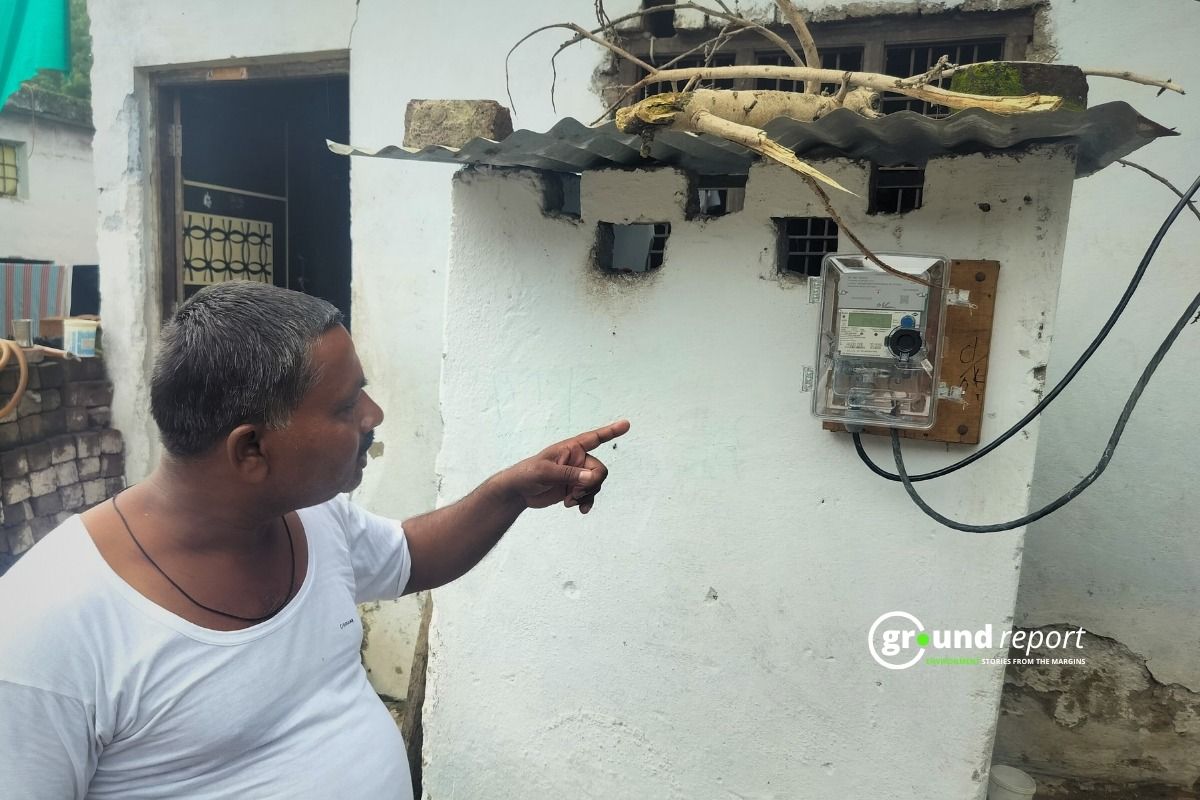
Worried, Rajesh checks the meter repeatedly. “When they were installing the new meter at my house, there was already a lot of opposition in the district,” he says. “Newspapers were full of reports about smart meters showing bills in the thousands.”
Now, Rajesh fears his next bill will be higher than he can afford. He’s even prepared to protest if that happens. But his concern isn’t his alone—many residents in Sehore are feeling the same anxiety over the new smart meters.
On July 2, tensions over smart meter installations turned violent in parts of Sehore. In one incident, angry locals attacked electricity company workers. Vikram, one of the employees, was hit on the head with a stone and seriously injured. Protesters also smashed 16 smart meters.
Following the attack, the administration has stepped in. Armed guards are now being deployed with teams installing the meters, and security has been tightened across the city. Installing smart meters has now become a task carried out under guard—almost at gunpoint.
What are these smart meters?
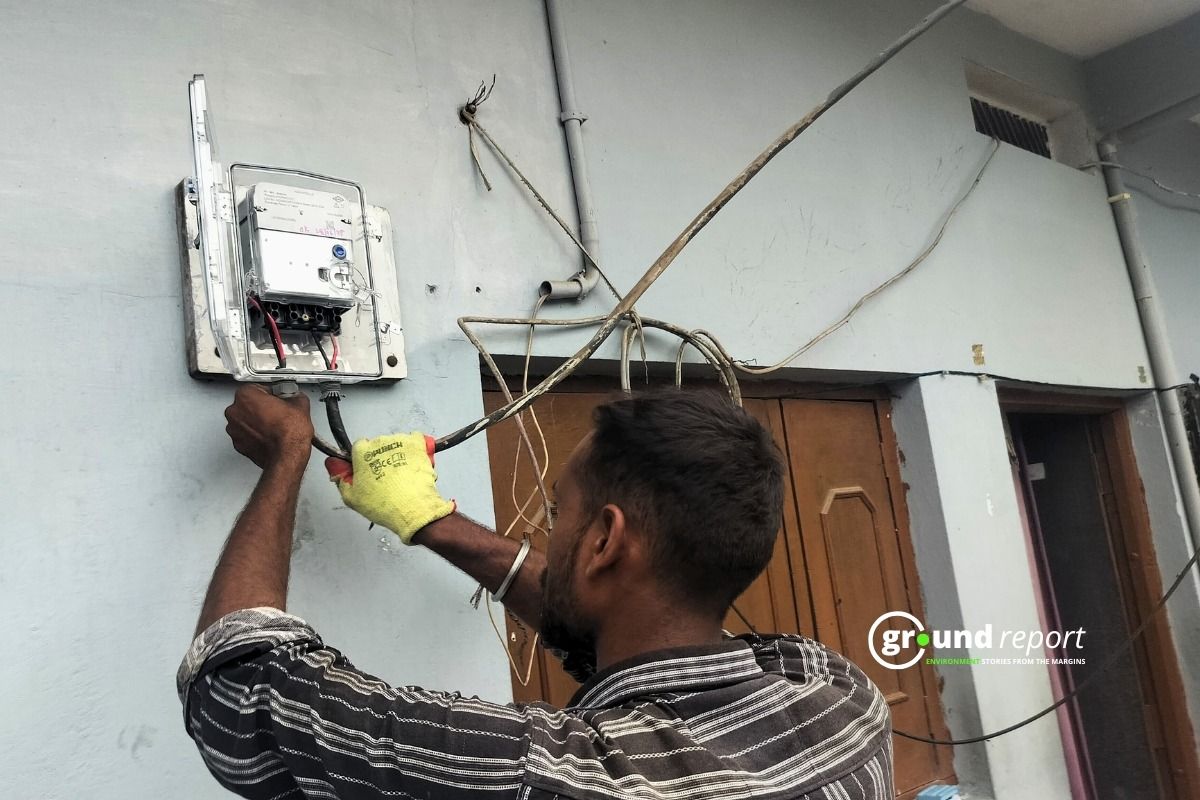
Smart meters are digital devices designed to measure and record electricity consumption in real time. They are different from traditional analogue meters that require manual readings. These meters accurately measure energy consumption using digital technology with different types of sensors. They measure voltage and current to measure total electricity usage. Electricity consumption is measured in watts and total electricity usage in kilowatts per hour.
The new smart meters have two-way communication, allowing them to send real-time consumption data to utility companies at regular intervals (typically every 15, 30, or 60 minutes).
This data transmission can be via a variety of modes, including radio frequency (RF) signals, cellular networks (such as 4G or 5G), broadband connections (such as DSL and fibre-optic networks) or power line communication (PLC). In addition to data transmission, smart meters are also capable of sending tariff updates or remote disconnections and alerts. This eliminates the hassle and cost of going door-to-door to take manual readings. Apart from this, users and service provider companies can monitor electricity usage and supply from the comfort of their homes.
Under the Smart Grid Mission
National Smart Grid Mission is a very ambitious program of the Indian government. It is an important part of the Automatic Metering Infrastructure. Under this program, old electricity usage and bill measuring meters installed in homes and buildings across the country are being replaced with new electronic smart meters.
The Smart Meter Scheme is a part of the National Smart Grid Mission. RDSS These smart meters are being installed across the country through the Revamped Distribution Sector Scheme. This entire program is being run on the PPP, i.e., the public-private partnership model.
The objective of smart meters is to reduce losses across the country to 12–15% by 2025. They also aim to close the gap between the Average Cost of Supply (ACS) and Average Realisable Revenue (ARR) to zero by 2025.
Simply put, the government wants to eliminate the difference between the cost of electricity supplied to each household and the revenue received in exchange for electricity in the coming year. Along with this, it wants to limit the additional expenses incurred on other technical expenses incurred in the process of supplying electricity, such as installing meters, taking readings, data entry, etc. And for this, smart meters are being said to be a better option.
An organisation named ISGF (India Smart Grid Forum) has evaluated the benefits of the meters and found out that due to smart meters, the cost incurred in activities like data entry will be reduced by Rs 1.5 lakh crore. Along with this, the accuracy of metering and billing will increase by 90 percent.
Billing Explained
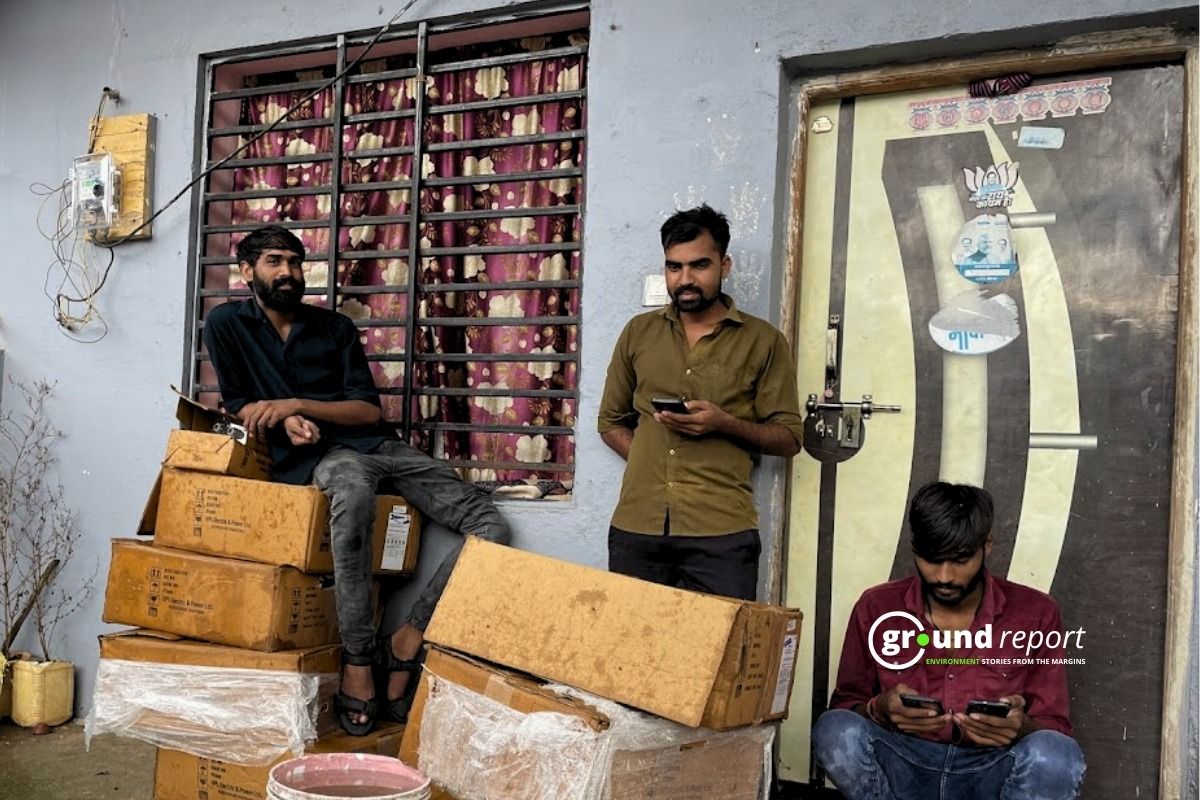
Ritik Yadav of Sehore has been installing smart meters in different areas for the last 6 months. Ritik gets 65 to 70 rupees for each installation. He has a target of installing 10 to 12 meters every day.
Ritik first takes the reading of the old meter. He enters this reading, along with the electricity connection details, into a mobile application developed by the electricity department. He then removes the meter and installs a new smart meter.
After installing the new meter, its reading is recorded. It is usually .07 or .08 watts. The reason for this is that these meters are checked before the consumer comes to the house, in which the energy consumption is recorded in the meter’s memory.
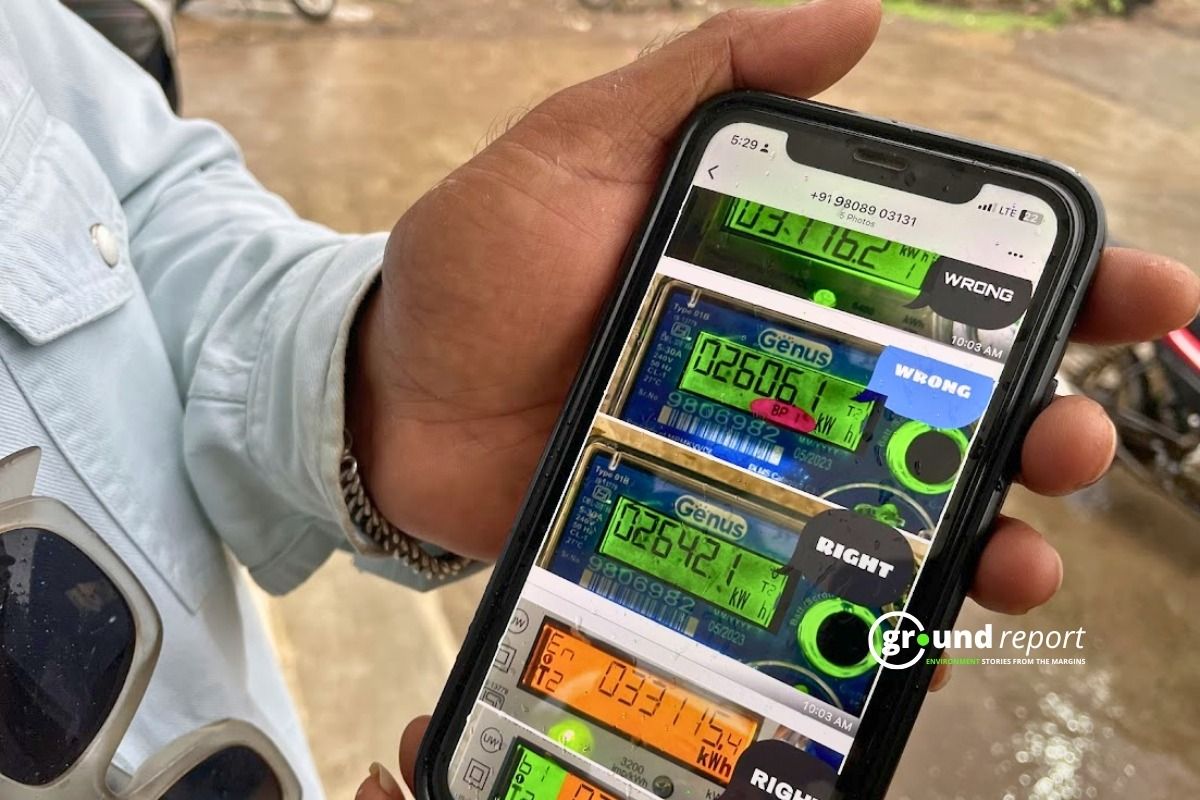
Finally, the old meter is packed and deposited in the electricity department office. Atulesh, Assistant Engineer in the Sehore Electricity Department, tells Ground Report that ‘preliminary testing’ and ‘pulse testing’ of these old meters is done. The meters found fit in this test are sent for installation in rural areas.
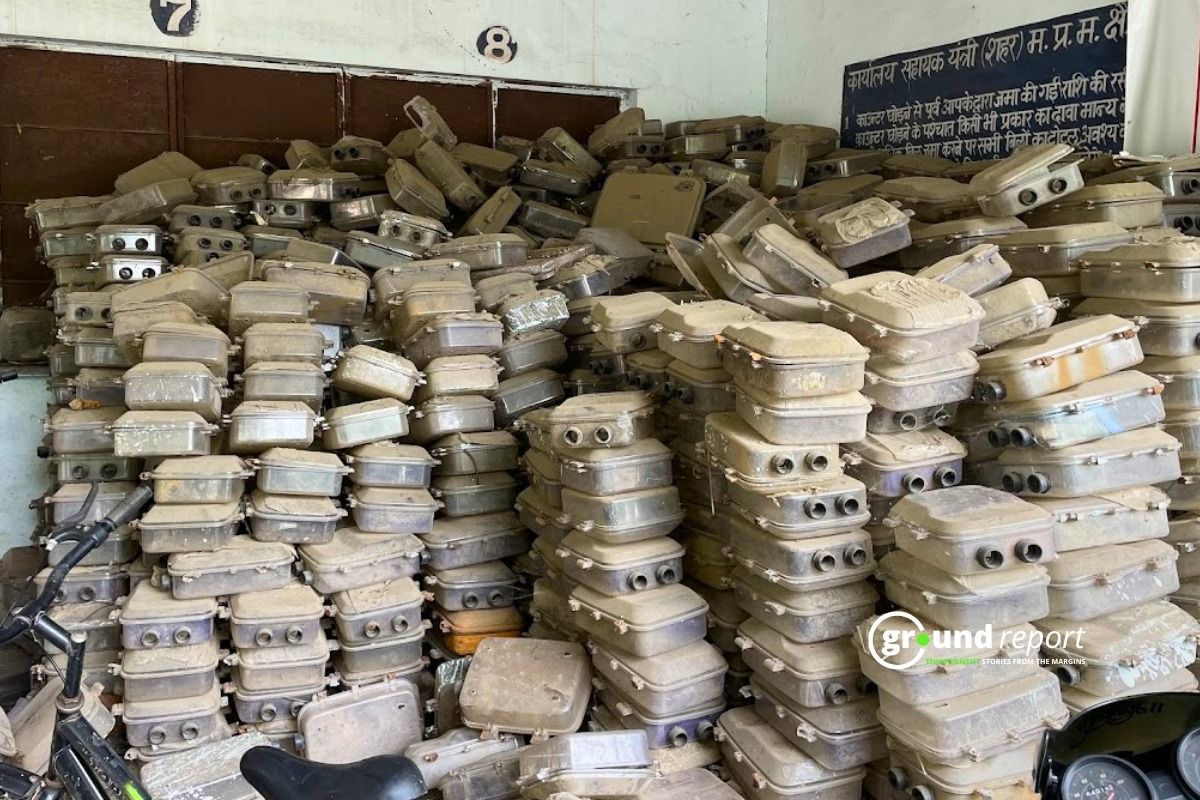
Although millions of meters will be replaced across the country, only a few of these can be installed in areas where meters are not currently installed. The remaining meters will create a mountain of e-waste. APARVA Rathore Trading Company has got the contract to install smart meters in Sehore city. Company supervisor Neeraj Gupta says on the question of e-waste that “the old meters will be recycled. The responsibility for this has been given to the company that manufactures smart meters.” Neeraj further says that his company is installing meters manufactured by the HPCL company. The electricity department will send the meters that are not useful to HPCL for disposal.
Do smart meters raise your bill?
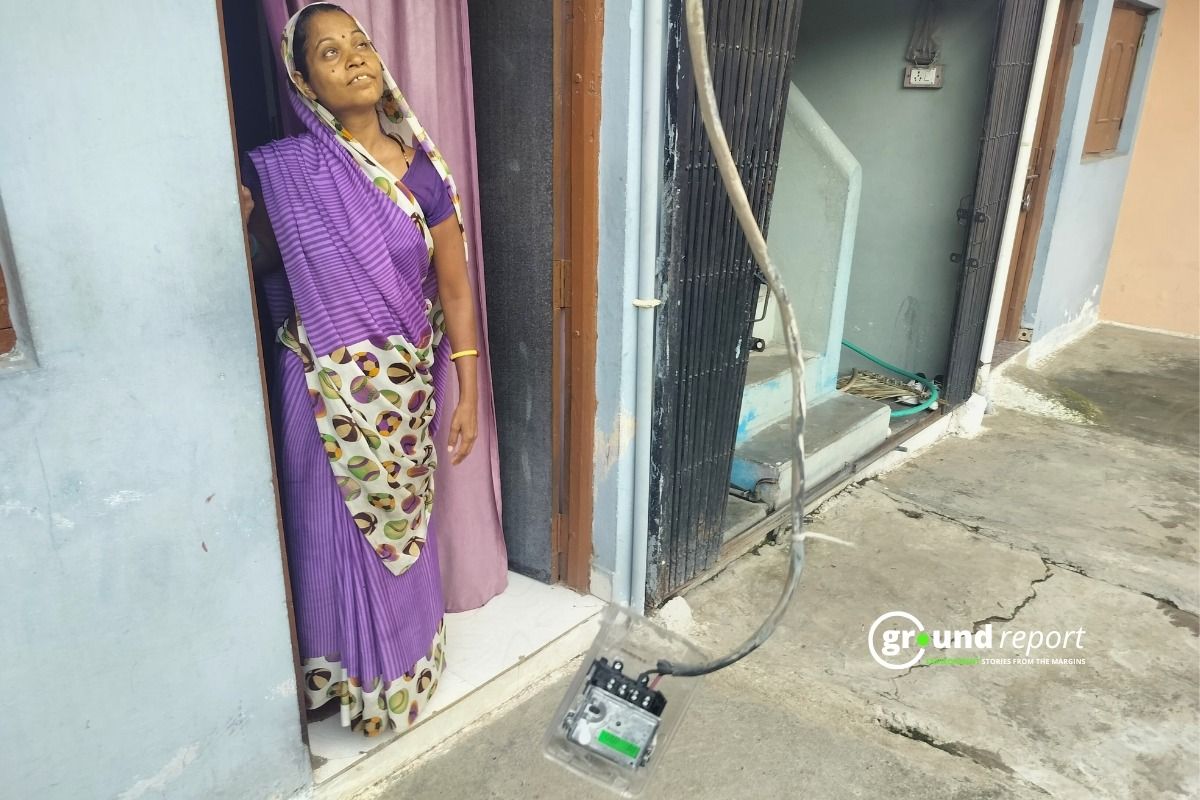
After the installation of smart meters, several cases emerged in the city where consumers reported a sharp rise in their electricity bills. These reports appeared in major local newspapers, fuelling public perception that smart meters cause higher bills. However, installation staff attribute this to ‘human error.’
Ritik, an installer who worked earlier in Nasrullaganj and Shyampur, says there were no complaints in those areas. “If someone objects to the new smart meter, we install a check meter at their home,” he explains.
A check meter means the old meter is installed alongside the new smart meter. The readings of both are then compared. If they match, it confirms that the smart meter is functioning correctly.
When we visited some homes with check meters, the readings were identical. This raised further questions—if the smart meters are accurate, why are some people still receiving unusually high electricity bills?
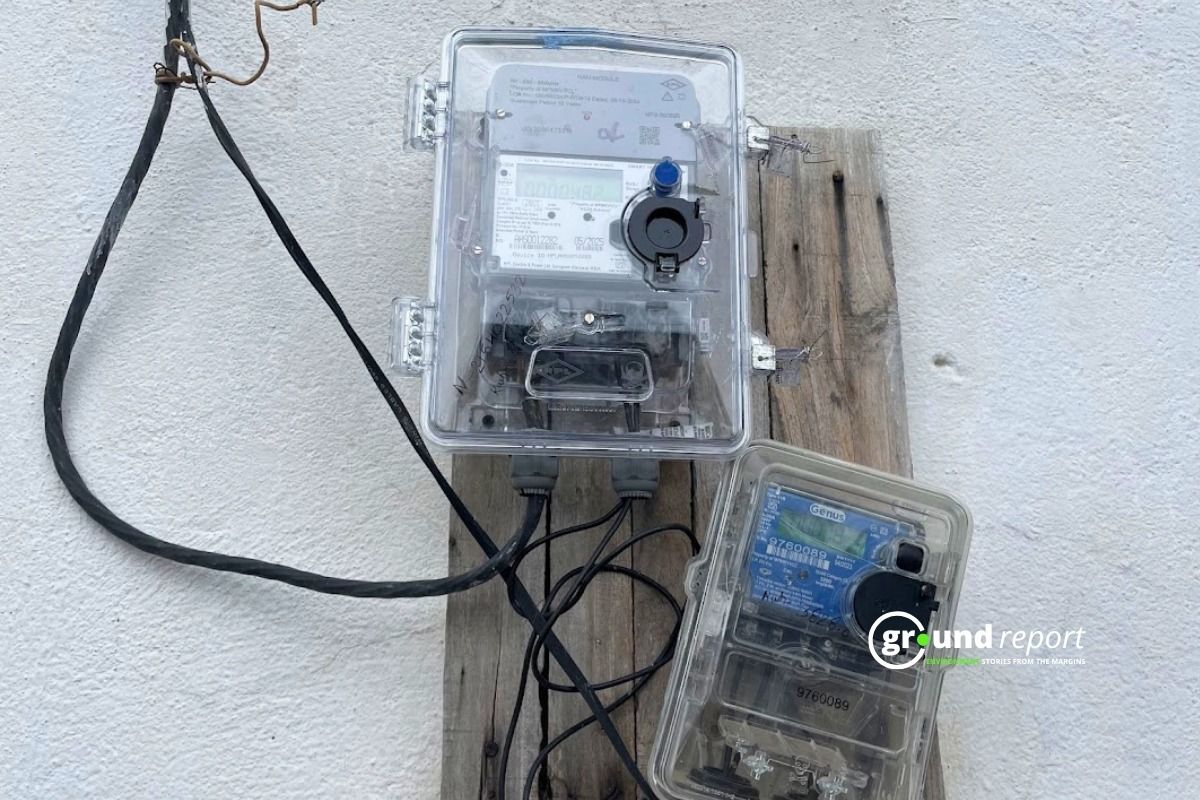
APARVA supervisor Neeraj says that when a new meter is installed, the reading of the old meter is updated manually. Sometimes, due to human error or technical fault in the old meter, the reading gets recorded higher.
For example, these errors can occur when the reading of an old meter is updated in a mobile application. Suppose the reading of an old meter was 4.60 watts, but when it was entered in the app, it was mistakenly changed to 46.0. Due to a change in one decimal point, the bill increased by more than 10 times.
Neeraj says when such cases come to light, the meter reading can be reviewed again and the matter is resolved by the electricity department.
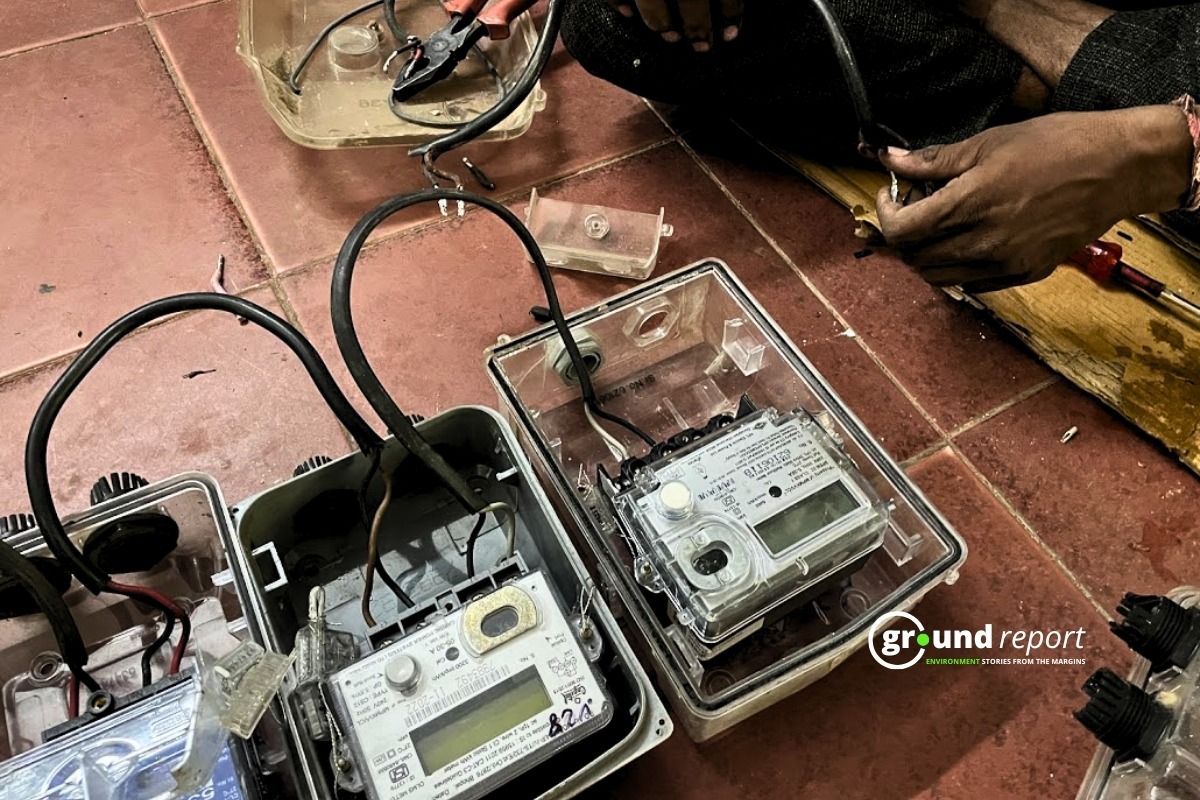
The meter stays connected to the network even when the power is off. Because of this, the meter’s network signal stays on all the time. Neeraj explains,
“We have installed modems on poles in every area to provide Wi-Fi to the smart meters. That’s why the Wi-Fi light on the meter stays on even during a power outage.”
If we talk about Sehore district, smart meters have been installed here since the last few months. Unexpected bills have come in only a few places. But this news proved to be enough to create the fear of pockets being cut among the rest of the citizens.
High Bills, No Answers
In some places of Sehore where meters had already been installed, the bills were very high. Meanwhile, a delegation of officials had come to Sehore to enumerate the benefits of smart meters. In the press conference, these officers were not able to clarify the doubts related to smart meters.
People say meter installers gave no information before replacing old meters. They simply came, changed the meters, and left. Without clear communication about the pros, cons, and how to read them, rumours spread quickly—fuelling misinformation and unrest. Political parties have also jumped in, calling smart meters a move against the common man.
One of the protestors against the new meters was Congress politician Pankaj Sharma, who had submitted a memorandum at the Collectorate.
He said, “These meters are being installed without the consent of the people. Bills of up to Rs 46,000 have come from these meters. Instead of changing the smart meters, the government should first upgrade the infrastructure for supplying electricity.” He further added,
“Even today, if there is a slight storm or rain, the power supply is disrupted for hours.”
Reforms Missing the Mark
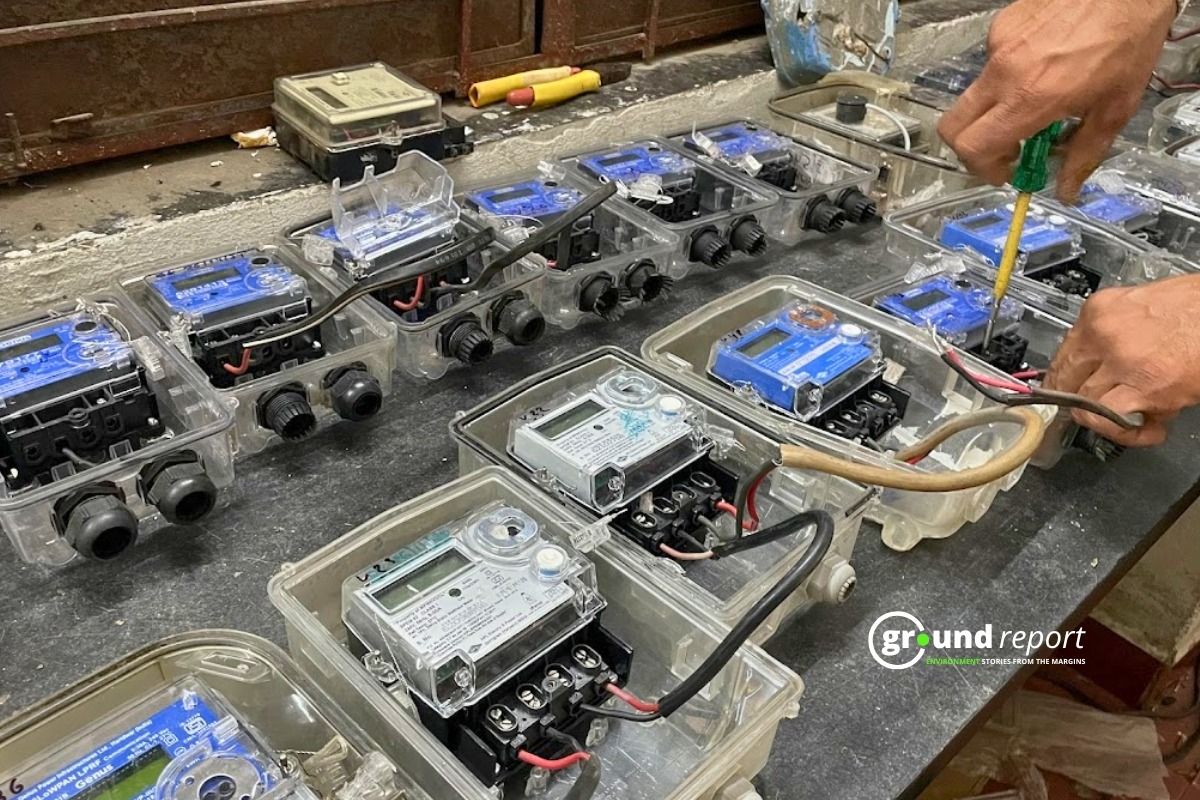
This program was launched by the Government of India in 2019 with the goal to install 25 crore smart meters across the country by 2027.
If we look at the current situation, about 22 crore 37 lakh smart meters have been sanctioned across the country, but only 3 crore 68 lakh meters have been installed. In Madhya Pradesh, 25 lakh meters have been installed so far. There are states like Meghalaya in the country where its progress is almost zero.
In Madhya Pradesh, the responsibility of installing smart meters has been given to three discoms of the state: MP-East, MP-Central, and MP-West. Out of these, MP-East has given the tender of service provider to Montecarlo, Alfanar Power; MP-Central has given the tender to Alfanar Power; and MP-West has awarded the tender to BCITS and Techno Electrics.
Of these, MP-West started this work in December 2022, MP-East in August 2023 and MP-Central in August 2024. If we look at all three discoms of Madhya Pradesh together, then a total of 1 crore 34 lakh meters were sanctioned in the state, out of which only 25 lakh meters have been installed so far. According to this, if we look at the progress of smart meters in Madhya Pradesh, it is still only 18.66 percent.
Smart meters are being hailed as a major reform, but several concerns remain unanswered. How secure are they against cyber threats? And what plans are in place for disposing of the old meters? While the potential benefits are clear, the incidents in Sehore highlight a critical issue—the administration has failed to gain the trust of residents like Rajesh, Chanda, and others. This lack of communication and confidence-building is emerging as a significant obstacle to the success of the Smart Grid Mission.
Edited by Diwash Gahatraj
Support us to keep independent environmental journalism alive in India.
Keep Reading
Solar Energy Storage System: Powering a Cleaner and Smarter Future
Sanchi solar city and the looming storage problem
Will Viability Gap Funding make the path to battery-based energy storage easier?
Lack of electricity connection, power cuts delay wheat sowing in MP
Stay connected with Ground Report for underreported environmental stories.
Follow us onX,Instagram, andFacebook; share your thoughts at greport2018@gmail.com; subscribe to our weekly newsletter for deep dives from the margins; join ourWhatsApp communityfor real-time updates; and catch our video reports on YouTube.
Your support amplifies voices too often overlooked—thank you for being part of the movement.



